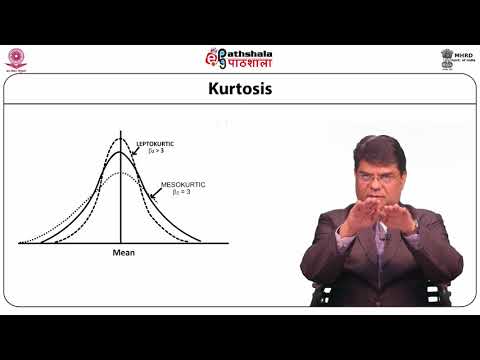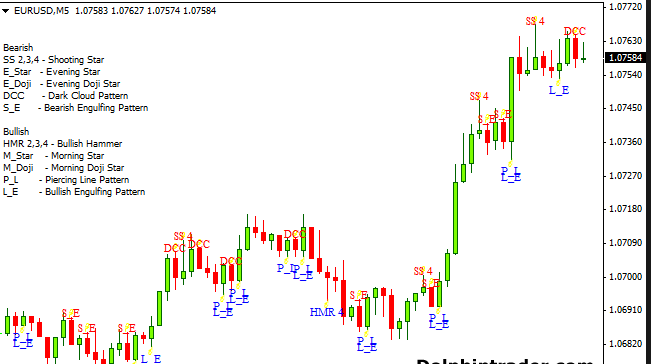
This and other important information is contained in the fund prospectuses and summary prospectuses, which can be obtained from a financial professional and should be read carefully before investing. By owning a mix of different investments, you’re diversifying your portfolio. Doing so can curb the risks you’d assume by putting all of your money in a single type of investment. Bonds have some advantages over
stocks, including relatively low volatility, high liquidity, legal
protection, and a variety of term structures. Bankrate.com is an independent, advertising-supported publisher and comparison service.
- These companies included some of the largest companies in the world such as Boeing, Disney, Royal Dutch Shell, and GM.
- We do not include the universe of companies or financial offers that may be available to you.
- Any estimates based on past performance do not a guarantee future performance, and prior to making any investment you should discuss your specific investment needs or seek advice from a qualified professional.
- A typical bond is issued with a face value, also called the par value, of $1,000 or some multiple of $1,000.
The problem he saw is that everyday investors seldom invest in individual corporate bonds, often confused with how bonds work and unable to select from the 9,000 bonds available for investing. In both the investment grade and high yield charts, the largest number of bonds were priced between par value (or 100) and less than 110. The higher above 110 we move in pricing, the fewer bonds there were that had such high prices. Often times, if a bond price increases from, say, 95 to 120, it can make sense to sell bonds before maturity so investors can lock in capital appreciation and maximize investment returns. Bond fund investors, on the other hand, cannot trade intraday, as bond fund trades are executed based on the fund’s end-of-day net asset value per share. Being able to invest in something at only one point in a trading day is like moving back to the dark ages for investors.
The face valueThe amount that a corporation pays a bondholder at the bond’s maturity. Is the amount that the corporation must pay the purchaser at the end of the life of the bond. Interest payments, also called coupon paymentsThe interest payment made by a corporation to the holder of a bond., are usually made on a biannual basis but could be of nearly any duration. There are even zero coupon bonds, which pay only the face value at maturity. US corporate bond issuers have strict financial disclosure requirements mandated by the US Securities and Exchange Commission (“SEC”). Such a type of fund provides the highest degree of diversification to an investor.
These types of funds offer lower yields than corporate bonds since they come with a lower default risk, and the interest payments are tax-free. Various aspects of the bond market impact the overall performance of the security, like the period of bond holding, type of security, and nature of the issuer, etc. Bonds issued by municipal corporations, local authorities, and government are less risky than corporate bonds, and the same with the period of bonds in which long-term bonds are more volatile than corporate bonds.
How confident are you in your long term financial plan?
If an issuer fails to fulfill its obligations, the other issuers are responsible for covering the defaulting issuer’s share of the bond obligation. In the event of a default by one of the issuers, the other issuers are responsible for covering the defaulting issuer’s share of the bond obligation. Bed Bath should not have been permitted to get itself into the financial position it did by prioritizing shareholder buybacks of its bondholders, employees, and vendors. Stock buybacks can create a floor under a stock price and can, at least over the short term, create a bounce in a stock price.
- As shown below in the Security of Principal section, high yield bond default rates are higher than investment grade bond default rates.
- There is no TDS in corporate bond fund investment, but banks charge TDS on fixed deposits at 10%.
- That said, bond funds are more fungible, as most of them, such as Vanguard Total Bond Market Index Fund (VBTLX), attempt to replicate a broadly followed index.
- Based on the information we present, readers can decide whether increasing their exposure to individual corporate bonds makes sense for them.
A company could perform well operationally and, due to its lower credit risk, bonds issued by the company could rally. On the other hand, a bond issuer could hit a rough patch and incur debt that is senior to an unsecured bond. Fortunately, the company’s operations turned around quickly, and Macy’s was able to pay down its senior borrowings. Prior to 2022, many people heard the word “bonds” and likely thought they were investing in something super-safe and boring. While corporate bonds must return to their par value on their maturity date (assuming no issuer default), for certain bonds, it can be a rollercoaster ride.
Corporate bonds aren’t always a bond issuer’s most senior debt
Although Bonds and stocks are both securities, the clear differences between the two are that the former matures in a specific period, while the latter typically remain outstanding indefinitely. Also, the bondholders are paid first over stockholders in case of liquidity. The major advantages of bonds include fixed returns advantages and disadvantages of bonds and regular interests. The historical returns for bonds have been lower, between 4%-6% since 1928. Over the past 30 years, stocks have returned an average of 11% annually; while bonds have returned just 5.6% per year, on average. Investors should carefully consider investment objectives, risks, charges and expenses.
Our experts have been helping you master your money for over four decades. We continually strive to provide consumers with the expert advice and tools needed to succeed throughout life’s financial journey. The offers that appear on this site are from companies that compensate us.
While some municipal bond issuers do provide detailed financial reports and budgets, these disclosures vary from issuer to issuer. Infrequent and non-uniform financial reports make it difficult for investors to compare the relative value of one muni bond to another. Investing in fixed-income securities requires knowledge of the industry, and many people usually do not want to spend a lot of time researching and analyzing individual bonds. Through a bond fund, they can have their money actively managed by a portfolio manager who possesses the technical knowledge of the industry. International bond funds give an investor exposure to securities issued by different sovereign nations and corporations and help them reduce the interest rate and economic risk.
Why Do Stocks Generally Outperform Bonds Over Time?
While high yield corporate bond default rates can be as low as 2%, they have also neared 10% during economic downturns such as the 2008 financial crisis. On the leading online bond trading platforms, municipal bonds will only show one or (at the maximum) two offer-side quotes compared to the many live-and-executable bid and offer quotes available for individual corporate bonds. In addition, since there are millions of municipal bonds outstanding, a municipal bond can go months — even years — without registering a new trade. Since muni bond issuers lack regular financials disclosures and muni bonds trade in an opaque market, it is difficult for investors to assess new investment opportunities.
Highly water-dispersed and stable deinoxanthin nanocapsule IJN – Dove Medical Press
Highly water-dispersed and stable deinoxanthin nanocapsule IJN.
Posted: Wed, 09 Aug 2023 05:50:09 GMT [source]
Interest rates can change over the life of the bond, which creates reinvestment risk, or the risk that new bonds will have lower yields than the ones you are receiving interest from. There are many types of corporate bonds, such as short-term bonds with maturities of five years or less, medium-term bonds that mature in five to 12 years and long-term bonds that mature in more than 12 years. User diversification means that an investor is investing in a mix of different types of investment. It reduces the risk of losing money by spreading money across different platforms or asset classes like stocks, bonds, and cash. This could help in the reduction of volatility and overall portfolio risk. As we know, bonds are less volatile than other assets, so many investors include them in their portfolios as a source of diversification.
Larger Investment needed
The market is responsible for increasing and decreasing the bond market value, which is affected by two factors, i.e., market volatility and macroeconomics. Bond prices are also influenced by the rating allocated by credit agencies which can either upgrade or downgrade a bond issuer based on its financial health. But these external factors do not impact the bond’s interest or coupon interest payment but only affect the market price of bonds.

Please note that a CUSIP is a nine-digit code that identifies each corporate bond issuance. CUSIPs are needed for corporate bonds since companies often issue more than one bond. Individual corporate bonds are the only asset class to receive a thumbs up across all five criteria, as shown in Figure 1.
Stock Funds:
Private equity is not ideal for established firms because of the high cost to them, both monetarily and in terms of the potential loss of control. In India, the bond markets are less developed than the equity market because of a lack of centralized exchange and market regulators and fewer market participants. In the bond market, due to bankruptcy or liquidation case, bondholders have to face a capital risk.

A well-diversified portfolio contains a broad range of holdings across several asset classes. In general, the longer your time horizon (i.e., the younger you are), the more risk you can take on. Therefore a portfolio weighted 80-90% in stocks and the rest in bonds or other assets is bearable. However, as your time horizon shortens, it is recommended to shift your allocation increasingly toward lower-risk bonds and reduce your allocation to stocks.
Disadvantages of Corporate Bonds
Our corporate bond returns page compares the investment returns of our individual corporate bond recommendations vs. those of the iShares HYG and LQD corporate bond ETFs. Through November 30, 2022, our exited recommendations had outperformed the iShares ETFs for 75.5% of our picks. In addition, in 17 of 53 exited recommendations, BondSavvy outperformed iShares by at least 10 percentage points. In only two recommendations did iShares outperform BondSavvy by at least 10 percentage points.

As mentioned before, when individual bonds in a portfolio are sold, it may create capital gain/loss. It is hard to predict these gains/losses for individual bonds, which makes it difficult to anticipate the tax consequences of investing in the bond fund. Some bond funds are actively managed, and they charge a management fee, which may have a drain on the investor’s return. Even when compared to stock ETFs, bond ETFs usually have higher expense ratios.
Risk-averse investors looking to safely deploy their capital and take comfort in more structured payout schedules would be better off investing in bonds. A dividend is essentially a distribution of some of the profits that a corporation makes to its shareholders. And any dividends that are not taken may be re-invested in the business in the form of more shares in a company. Stocks and bonds each have a different level of risk and behave differently in response to changes in the financial markets.